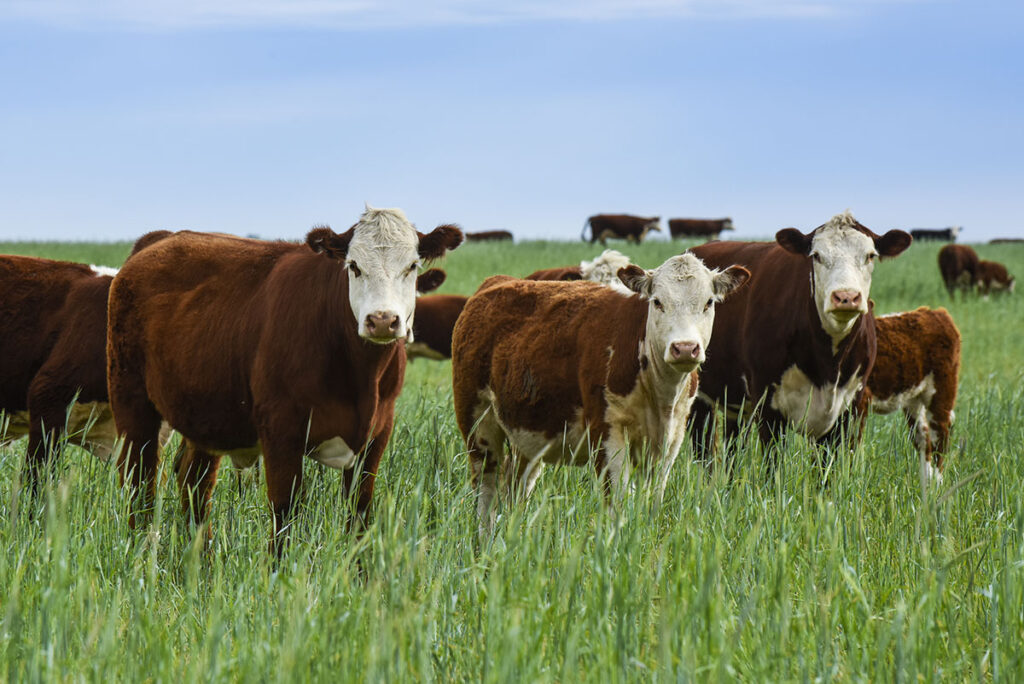 In this two-part blog series, we’ll explain the best practices for creating a rotational grazing plan.
In this two-part blog series, we’ll explain the best practices for creating a rotational grazing plan.
What is the easiest way to reduce feed costs during the grazing season? Optimizing pasture utilization and animal performance through careful planning and sound management practices can also result in cutting feed costs in half through rotational grazing.
Successful rotational grazing requires cattle producers to have a working knowledge of the plants, soils and wildlife that call your pastures home. The goal is to provide quality pasture for your cattle throughout the grazing season.
The first step to creating a rotational grazing program is to determine how many animal units will be fed through the grazing program. One animal unit equals the daily forage intake of a 1,000-pound dry cow, or about 25 pounds of dry forage per day. Animal units may need adjusting if that animal doesn’t meet the 1,000-pound threshold:
- Larger than 1,000 pounds
- How long it’s been since calving (what size calf are they feeding?)
- Bulls
- Finishing steers
Here’s an example of how to determine total animal units for your herd:
1,300-pound cow with calf = 1.6 AU and 2,000-pound bull = 1.7 AU
1.6 AU x 30 cows = 48
+ 1.7 AU x 1 bull = 1.7
= 49.7 (rounded up to 50) total AU for the herd
The number of acres needed for a herd depends on the animals’ forage requirements and the available forage produced by each pasture. Pasture growth varies due to a wide variety of factors, including:
- Plant species
- Soil characteristics
- Topography
- Fertilization
- Temperature
- Soil moisture
This variability means that only an estimate can be made on the number of acres needed for a grazing herd. Cattle producers will have to estimate how many acres each AU needs for each month of grazing. Values for the acres required for one AU for different grasses can be found online. Don’t forget that there is usually excess forage available in spring, and by late fall, herds will most likely need supplemental forage—unless stockpiled forages are available.

Paddock size is another factor in creating a rotational grazing plan, and should be figured based on:
- AU of the herd
- Amount of available pasture when grazing starts
- Length of grazing period
Depending on plant density, most pastures have about 300 pounds of pasture for each inch of height.